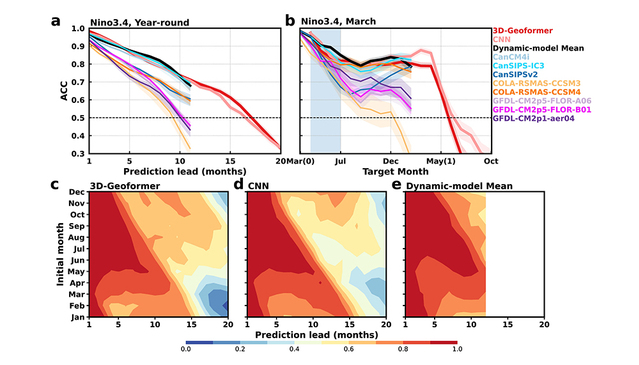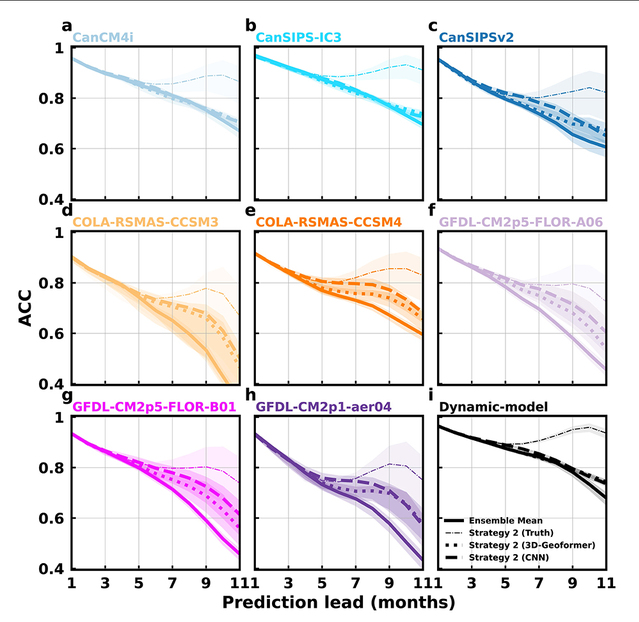Recently, the Frontier Science Center for Deep Ocean Multispheres and Earth System/the Key Laboratory of Physical Oceanography at OUC published their latest research outcome titled “Combined Dynamical-Deep Learning ENSO Forecasts” in Nature Communications. The study introduced two hybrid forecasting strategies that integrate deep learning with dynamical models, significantly improving the accuracy of El Niño–Southern Oscillation (ENSO) predictions. The paper was co-authored by PhD student Chen Yipeng and Associate Professor Jin Yishuai, who served as joint first authors. Professors Chen Xianyao and Lin Xiaopei, along with experts from both domestic and international institutions, contributed to the collaborative effort.
ENSO is a global climate phenomenon with the most prominent mode of interannual climate variability. Therefore, enhancing its forecast capability is critical to socio-economic development. While dynamical models have made substantial advancements over the past five decades, recent research has demonstrated that DL models can outperform single dynamical model in ENSO forecasting. However, how to effectively combine the strengths of both approaches for even greater predictive power remains a key challenge.
In this study, the researchers first evaluated the performance of two DL models and eight dynamical models. Results indicated that while DL models outperformed most dynamical models, their accuracy was comparable to that of multi-model ensemble forecasting. This suggests that dynamical models continue to offer valuable contributions. To further improve the forecasting capability of ENSO, combining DL and dynamical models is essential.
The team proposed two novel hybrid strategies. Strategy 1 involved averaging forecasts from the DL models and the multi-models, which led to significant improvements—forecast accuracy increased by 35.6%, 51.5%, and 50.5% compared to the individual DL models and the multi-models, respectively. Strategy 2 utilized DL models to select a subset of dynamical models whose initial conditions exhibit smaller errors. This approach boosted the medium- and long-term (over 8 months) forecast accuracy by 62.5%. Further analysis confirmed that both strategies yield statistically significant improvements across the year and are particularly effective in improving forecasting capability during the spring season.


